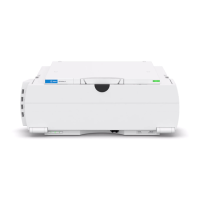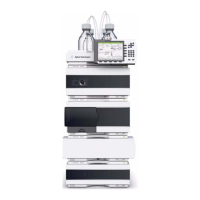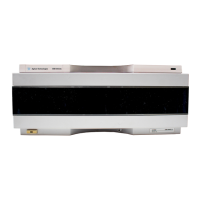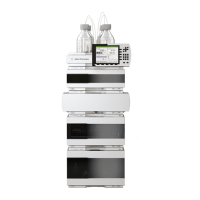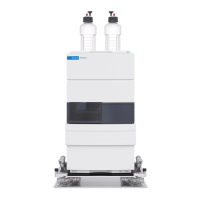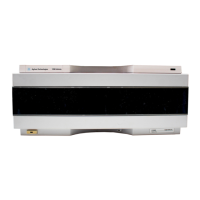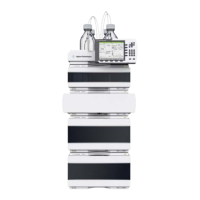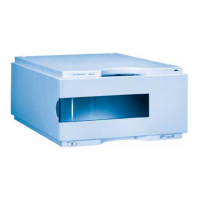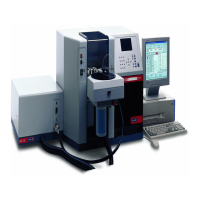80 Purification Solution - Developer's Guide
6
Calibration Procedures
System Configuration and Delay Time Calibration
after the preparative sequence when the delay value needs to be written to
the collectors.
Insufficient UV-to-FC delay time or MSD-to-FC delay time
Insufficient UV-to-FC delay time
The minimum required delay time for UV detector triggered collection is:
4/frequency + Response time. The term 4/frequency stands for four data
points, which are needed in the slope-based collection.
There are several reasons why the UV-to-FC delay time may be too low:
• The UV detector data rate is too low. A low UV data rate, especially in
combination with a high flow rate, may require a delay coil to ensure that
the UV detector has enough time to evaluate the FC trigger signal.
• The volume of delay tubing in front of the fraction collector is too low.
• The make-up flow is too low for the applied preparative flow. There are
limitations for combinations of preparative and make-up flows; see the
example in “System Configuration and Delay Time Calibration” on page 70.
• The volume of tubing between the splitter and the detector(s) is too high.
There are several ways to increase the UV-to-FC delay time, but some of them
can have a certain disadvantage (given in parentheses), so consider the most
suitable option for the given situation:
• Increase the UV data rate (a higher data rate typically has higher noise, so
in combination with the Slope mode for collection, the higher detector noise
can cause a false FC start/stop signal if the noise is visible along a collected
peak).
• Use a longer delay coil in front of the fraction collector (a higher coil volume
causes more dispersion, so use coils with reduced dispersion rate such as
knitted coils; also, a longer coil with the same inner diameter will increase
back-pressure).
• Decrease the preparative flow (influences chromatographic resolution).
• Increase the make-up flow (increases the speed of the analytes when
passing through the detectors, which typically results in narrower and/or
smaller peaks, so consider whether or not the detector data rate is
sufficient for the signal response).
